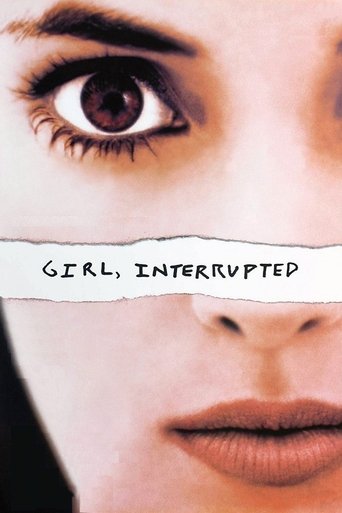Rozar la locura, es a veces, la única forma de dobrevivir.
Girl, Interrupted is a raw and riveting 1999 American psychological drama that plunges into the turbulent mind of Susanna Kaysen, adapted from her 1993 memoir and directed by James Mangold with a $40 million budget. Set in the late 1960s, this 127-minute film stars Winona Ryder as Susanna, a young woman whose vague suicidal thoughts land her in Claymoore, a Massachusetts psychiatric hospital, after a single session with a psychiatrist. Grossing $48,350,205 worldwide and earning a 7.3/10 IMDb rating, it’s a cultural touchstone, famed for Angelina Jolie’s Oscar-winning performance as the electrifying Lisa Rowe, which stole the spotlight and cemented her stardom, though some argue Ryder’s nuanced lead is equally compelling. The film’s power lies in its haunting moments: Susanna’s disorienting arrival at Claymoore, where she’s swept into a surreal world of eclectic patients, feels like tumbling down Alice’s rabbit hole. Jolie’s Lisa, a sociopathic firebrand, mesmerizes with her reckless charisma—her chilling ice cream shop outburst and a gut-punch confrontation in the hospital’s tunnels are unforgettable. Ryder’s Susanna grapples with her borderline personality disorder diagnosis, torn between Lisa’s seductive chaos and the pull of reality, with a poignant journal scene capturing her fragile clarity. The ensemble—Whoopi Goldberg as the steely nurse Valerie, Brittany Murphy’s tragic Daisy, and Elisabeth Moss’ fragile Polly—adds depth, while Mychael Danna’s score and Jack N. Green’s muted visuals evoke the era’s unrest. Critics praised its emotional depth (54% on Rotten Tomatoes), but some, like Roger Ebert, noted its struggle to balance memoir’s introspection with cinematic flair. Released on December 21, 1999, by Columbia Pictures, this U.S.-produced drama resonated amid Y2K’s cultural shift, sparking debates on mental health stigma and institutional care, with some calling it a '90s classic' for its raw portrayal of female resilience. Shot in Pennsylvania, it blends gritty realism with dreamlike sequences, like Susanna’s fleeting escape to a bowling alley, reflecting the 1960s’ social upheaval. Streamable on platforms like Netflix or Hulu, it’s a must-watch for fans of psychological dramas or those drawn to stories of sanity’s fragile edge, where going a little crazy might just be the sanest choice.
Año1999
Presupuesto40000000$
Duración127 minuto
Ingresos48350205$
GénerosDrama
Países de producciónUnited States of America


